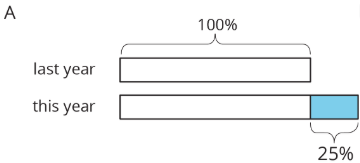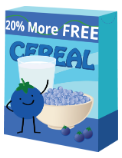4.2.1: Increasing and Decreasing
- Page ID
- 38308
\( \newcommand{\vecs}[1]{\overset { \scriptstyle \rightharpoonup} {\mathbf{#1}} } \)
\( \newcommand{\vecd}[1]{\overset{-\!-\!\rightharpoonup}{\vphantom{a}\smash {#1}}} \)
\( \newcommand{\id}{\mathrm{id}}\) \( \newcommand{\Span}{\mathrm{span}}\)
( \newcommand{\kernel}{\mathrm{null}\,}\) \( \newcommand{\range}{\mathrm{range}\,}\)
\( \newcommand{\RealPart}{\mathrm{Re}}\) \( \newcommand{\ImaginaryPart}{\mathrm{Im}}\)
\( \newcommand{\Argument}{\mathrm{Arg}}\) \( \newcommand{\norm}[1]{\| #1 \|}\)
\( \newcommand{\inner}[2]{\langle #1, #2 \rangle}\)
\( \newcommand{\Span}{\mathrm{span}}\)
\( \newcommand{\id}{\mathrm{id}}\)
\( \newcommand{\Span}{\mathrm{span}}\)
\( \newcommand{\kernel}{\mathrm{null}\,}\)
\( \newcommand{\range}{\mathrm{range}\,}\)
\( \newcommand{\RealPart}{\mathrm{Re}}\)
\( \newcommand{\ImaginaryPart}{\mathrm{Im}}\)
\( \newcommand{\Argument}{\mathrm{Arg}}\)
\( \newcommand{\norm}[1]{\| #1 \|}\)
\( \newcommand{\inner}[2]{\langle #1, #2 \rangle}\)
\( \newcommand{\Span}{\mathrm{span}}\) \( \newcommand{\AA}{\unicode[.8,0]{x212B}}\)
\( \newcommand{\vectorA}[1]{\vec{#1}} % arrow\)
\( \newcommand{\vectorAt}[1]{\vec{\text{#1}}} % arrow\)
\( \newcommand{\vectorB}[1]{\overset { \scriptstyle \rightharpoonup} {\mathbf{#1}} } \)
\( \newcommand{\vectorC}[1]{\textbf{#1}} \)
\( \newcommand{\vectorD}[1]{\overrightarrow{#1}} \)
\( \newcommand{\vectorDt}[1]{\overrightarrow{\text{#1}}} \)
\( \newcommand{\vectE}[1]{\overset{-\!-\!\rightharpoonup}{\vphantom{a}\smash{\mathbf {#1}}}} \)
\( \newcommand{\vecs}[1]{\overset { \scriptstyle \rightharpoonup} {\mathbf{#1}} } \)
\( \newcommand{\vecd}[1]{\overset{-\!-\!\rightharpoonup}{\vphantom{a}\smash {#1}}} \)
Lesson
Let's use percentages to describe increases and decreases.
Exercise \(\PageIndex{1}\): Improving Their Game
Here are the scores from 3 different sports teams from their last 2 games.
| sports team | total points in game 1 | total points in game 2 |
|---|---|---|
| football team | \(22\) | \(30\) |
| basketball team | \(100\) | \(108\) |
| baseball team | \(4\) | \(12\) |
- What do you notice about the teams' scores? What do you wonder?
- Which team improved the most? Explain your reasoning.
Exercise \(\PageIndex{2}\): More Cereal and a Discounted Shirt
1. A cereal box says that now it contains 20% more. Originally, it came with 18.5 ounces of cereal. How much cereal does the box come with now?

2. The price of a shirt is $18.50, but you have a coupon that lowers the price by 20%. What is the price of the shirt after using the coupon?

Exercise \(\PageIndex{3}\): Using Tape Diagrams
1. Match each situation to a diagram. Be prepared to explain your reasoning.
- Compared with last year’s strawberry harvest, this year’s strawberry harvest is a 25% increase.
- This year’s blueberry harvest is 75% of last year’s.
- Compared with last year, this year’s peach harvest decreased 25%.
- This year’s plum harvest is 125% of last year’s plum harvest.


2. Draw a diagram to represent these situations.
- The number of ducks living at the pond increased by 40%.
- The number of mosquitoes decreased by 80%.
Are you ready for more?
What could it mean to say there is a 100% decrease in a quantity? Give an example of a quantity where this makes sense.
Exercise \(\PageIndex{4}\): Agree or Disagree: Percentages
Do you agree or disagree with each statement? Explain your reasoning.
- Employee A gets a pay raise of 50%. Employee B gets a pay raise of 45%. So Employee A gets the bigger pay raise.
- Shirts are on sale for 20% off. You buy two of them. As you pay, the cashier says, “20% off of each shirt means 40% off of the total price.”
Summary
Imagine that it takes Andre \(\frac{3}{4}\) more than the time it takes Jada to get to school. Then we know that Andre’s time is \(1\frac{3}{4}\) or 1.75 times Jada’s time. We can also describe this in terms of percentages:

We say that Andre’s time is 75% more than Jada’s time. We can also see that Andre’s time is 175% of Jada’s time. In general, the terms percent increase and percent decrease describe an increase or decrease in a quantity as a percentage of the starting amount.
For example, if there were 500 grams of cereal in the original package, then “20% more” means that 20% of 500 grams has been added to the initial amount, \(500+(0.2)\cdot 500=600\), so there are 600 grams of cereal in the new package.

We can see that the new amount is 120% of the initial amount because
\(500+(0.2)\cdot 500=(1+0.2)500\)

Glossary Entries
Definition: Percentage Decrease
A percentage decrease tells how much a quantity went down, expressed as a percentage of the starting amount.
For example, a store had 64 hats in stock on Friday. They had 48 hats left on Saturday. The amount went down by 16.
This was a 25% decrease, because 16 is 25% of 64.

Definition: Percentage Increase
A percentage increase tell how much a quantity went up, expressed as a percentage of the starting amount.
For example, Elena had $50 in the bank on Monday. She had $56 on Tuesday. The amount went up by $6.
This was a 12% increase, because 6 is 12% of 50.

Practice
Exercise \(\PageIndex{5}\)
For each diagram, decide if \(y\) is an increase or a decrease relative to \(x\). Then determine the percent increase or decrease.

Exercise \(\PageIndex{6}\)
Draw diagrams to represent the following situations.
- The amount of flour that the bakery used this month was a 50% increase relative to last month.
- The amount of milk that the bakery used this month was a 75% decrease relative to last month.
Exercise \(\PageIndex{7}\)
Write each percent increase or decrease as a percentage of the initial amount. The first one is done for you.
- This year, there was 40% more snow than last year.
The amount of snow this year is 140% of the amount of snow last year. - This year, there were 25% fewer sunny days than last year.
- Compared to last month, there was a 50% increase in the number of houses sold this month.
- The runner’s time to complete the marathon was a 10% less than the time to complete the last marathon.
Exercise \(\PageIndex{8}\)
The graph shows the relationship between the diameter and the circumference of a circle with the point \((1,\pi\) shown. Find 3 more points that are on the line.

(From Unit 3.1.3)
Exercise \(\PageIndex{9}\)
Priya bought \(x\) grams of flour. Clare bought \(\frac{3}{8}\) more than that. Select all equations that represent the relationship between the amount of flour that Priya bought, \(x\), and the amount of flour that Clare bought, \(y\).
- \(y=\frac{3}{8}x\)
- \(y=\frac{5}{8}x\)
- \(y=x+\frac{3}{8}x\)
- \(y=x-\frac{3}{8}x\)
- \(y=\frac{11}{8}x\)
(From Unit 4.1.4)


